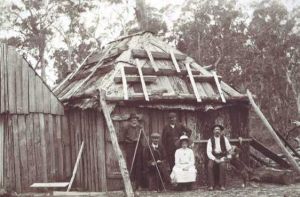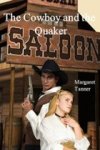~ by Margaret Tanner, Western/Australian Historical Romance Author
Life on the American and Australian frontiers have a strikingly similar history. For example, take the The American Homestead Act, and the Australian Act of Selection, which is the basis for my novel, Frontier Belle.
 America: The original Homestead Act was signed into law by President Abraham Lincoln on May 20th, 1862. It gave applicants freehold title to up to 160 acres of undeveloped federal land west of the Mississippi River. The law required only three steps from the applicant – file an application, improve the land, then file for a deed of title. Anyone who had never taken up arms against the U.S. government, including freed slaves, could file a claim on the provisions that they were over the age of twenty one and had lived on the land for five years.
America: The original Homestead Act was signed into law by President Abraham Lincoln on May 20th, 1862. It gave applicants freehold title to up to 160 acres of undeveloped federal land west of the Mississippi River. The law required only three steps from the applicant – file an application, improve the land, then file for a deed of title. Anyone who had never taken up arms against the U.S. government, including freed slaves, could file a claim on the provisions that they were over the age of twenty one and had lived on the land for five years.
The Homestead Act’s lenient terms proved to be ill-fated for many settlers. Claimants didn’t have to own farming implements or even to have had any farming experience. The allocated tracts of land may have been adequate in humid regions, but were not large enough to support plains settlers where lack of water reduced yields.
Speculators often got control of homestead land by hiring phony claimants or buying up abandoned farms.
 Most of us visualise the frontier home as a rustic log cabin nestled in a peaceful mountain valley or on a sweeping green plain. But in reality, the “little house on the prairie” was often not much more than a shack or a hastily scratched out hole in the ground. In the treeless lands of the plains and prairies, log cabins were out of the question so homesteaders turned to the ground beneath their feet for shelter. The sod house, or “soddy,” was one of the most common dwellings in the frontier west. The long, tough grasses of the plains had tight, intricate root systems, and the earth in which they were contained could be cut into flexible, yet strong, bricks.
Most of us visualise the frontier home as a rustic log cabin nestled in a peaceful mountain valley or on a sweeping green plain. But in reality, the “little house on the prairie” was often not much more than a shack or a hastily scratched out hole in the ground. In the treeless lands of the plains and prairies, log cabins were out of the question so homesteaders turned to the ground beneath their feet for shelter. The sod house, or “soddy,” was one of the most common dwellings in the frontier west. The long, tough grasses of the plains had tight, intricate root systems, and the earth in which they were contained could be cut into flexible, yet strong, bricks.
Ground soaked by rains or melting snow was ideal for starting sod house construction. When the earth was soft and moist, homesteaders would break the soil with an ox- or horse-drawn sod cutter, which was an instrument similar to a farming plough. Sod cutters produced long, narrow strips of sod, which could then be chopped into bricks with an axe. These two- to three-foot square, four-inch thick sod bricks were then stacked to form the walls of the sod house. A soddy roof was constructed by creating a thin layer of interlacing twigs, thin branches, and hay, which were then covered over with another layer of sod. To save time many sod houses were built into the sides of hills or banks. Some settlers gouged a hole in a hill side, so they only had to build a front wall and roof. As a result of their extremely thick walls, soddies were cool in the summer and warm in the winter. Soddies were also extremely cheap to build. Of course, there were drawbacks to sod-house living. As the house was built of dirt and grass, it was constantly infested with bugs, mice and snakes. The sod roofs often leaked, which turned the dirt floor into a quagmire. Wet roofs took days to dry out and the enormous weight of the wet earth often caused roof cave-ins. Even in the very best weather, sod houses were plagued with problems. When the sod roof became extremely dry, dirt and grass continually rained down on the occupants of the house.
A typical American log cabin measured about ten by twenty feet, regardless of the number of inhabitants. Settlers often built lofts across the cabin roof or lean-tos across the rear of the cabin to give the family more space. Typically, frontier cabins featured only one room, which served as kitchen, dining room, living room, workroom, and bedroom.
Homesteaders could often build a log cabin in a matter of days, using only an axe and auger. No nails were required for the task. The first step in construction was to build a stone or rock foundation, to keep the logs off the ground and prevent rot. Once the foundation was laid, settlers would cut down trees and square off the logs. These logs were then “notched” in the top and bottom of each end then stacked to form walls. The notched logs fitted snugly together at the corners of the cabin, and held the walls in place. After the logs were stacked, gaps remained in the walls. Settlers had to jam sticks and wood chips into the gaps, then they filled in the remaining gaps with cement made out of earth, sand, and water. Fireplaces were built of stone, and often had stick-and-mud chimneys. Most cabins had dirt or gravel floors, which had to be raked daily to preserve their evenness.
Australia: In the colony of Victoria the 1860 Land Act allowed free selection of crown land. This included land already occupied by the squatters, (wealthy land owners) who had managed to circumvent the law for years and keep land that they did not legally own.
 The Act allowed selectors access to the squatters’ land, and they could purchase between 40 and 320 acres of crown land, but after that, the authorities left them to fend for themselves. Not an easy task against the wealthy, often ruthless squatters who were incensed at what they thought was theft of their land.
The Act allowed selectors access to the squatters’ land, and they could purchase between 40 and 320 acres of crown land, but after that, the authorities left them to fend for themselves. Not an easy task against the wealthy, often ruthless squatters who were incensed at what they thought was theft of their land.
In 1861, the Act of Selection was intended to encourage closer settlement, based on intensive agriculture. Selectors often came into conflict with squatters, who already occupied land and were prepared to fight to keep it. The bitterness ran deep for many years, often erupting into violence.
The first permanent homesteads on the Australian frontier were constructed using posts and split timber slabs. The posts were set into the ground, about three feet apart, according to the desired layout. Slabs of timber were then dropped into the slots. A sapling or similar, straight piece of timber ran across the top of the posts, which allowed them to be tied together so they could support the roof. Clay was often plugged in between the joins and splits of the cladding to stop draughts. The internal walls were sometimes plastered with clay and straw, lined with hessian/calico, white washed or simply left as split timber. Roofs were pitched using saplings straight from the bush and often clad with bark. Early settlers learnt from the aborigines that large sheets of bark could be cut and peeled off a variety of trees and used as sheets to clad the roof.
So, as you can see, there is not much difference between our two countries in this respect.


 Margaret Tanner writes Australian frontier romance, and has recently published two western romances, Cowboy Christmas, and The Cowboy And The Quaker. Cowboy Christmas is included in the Western Christmas Anthology, Silver Belles And Stetsons. (Ten Christmas novellas set in the old west, from top selling and award winning authors. Only 99 cents as a special introductory offer).
Margaret Tanner writes Australian frontier romance, and has recently published two western romances, Cowboy Christmas, and The Cowboy And The Quaker. Cowboy Christmas is included in the Western Christmas Anthology, Silver Belles And Stetsons. (Ten Christmas novellas set in the old west, from top selling and award winning authors. Only 99 cents as a special introductory offer).
Margaret’s books can be found at the Pioneer Hearts Bookstore on Amazon. Click on the above titles for purchasing information.
Margaret can also be found online at:
http://www.margarettanner.com/
http://mjljtanner.wix.com/loveleftbehind#!cowboy-christmas/cadi
Frontier Belle is also published by Books We Love Publishing at

Thank you, Margaret. I enjoyed reading the comparisons between our two countries.
LikeLike
Thank you Cindy. I was really surprised when I started my research to see how closely aligned some of our history is.
LikeLike
Thank you for inviting me to Pioneer Hearts Cissie.
LikeLike
Margaret, loved the comparisons and enjoyed your blog post.
LikeLike
Thanks Caroline, nice of you to drop by.
LikeLike
Great post, Margaret! I enjoyed learning about Australian settlers ad more about americans as well. thanks!
LikeLike
Thanks for dropping by Lyn.
LikeLike
Very interesting historical comparison, Margaret. It is mind boggling how hard settlers worked on either frontier to make a life for themselves. They were amazing people, the early homesteaders in both Australia and the U.S.
LikeLike
Hi Hebby, thank you for dropping by. Yes it is amazing how they coped. Must have been particularly hard for the women.
LikeLike